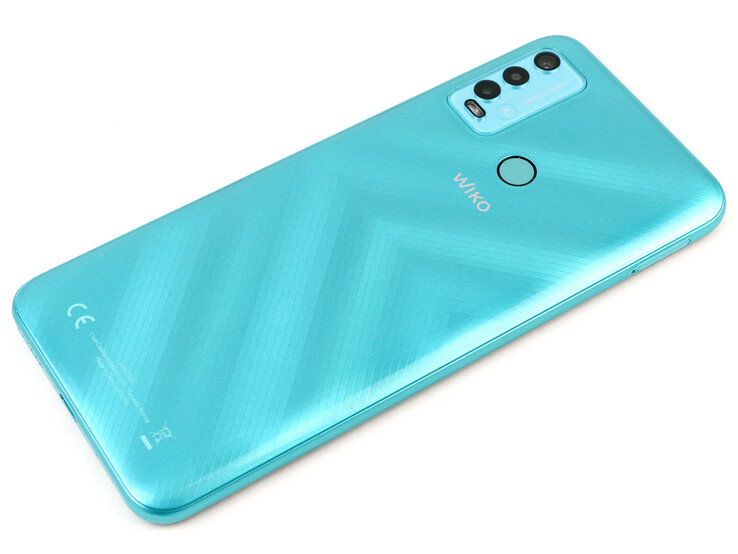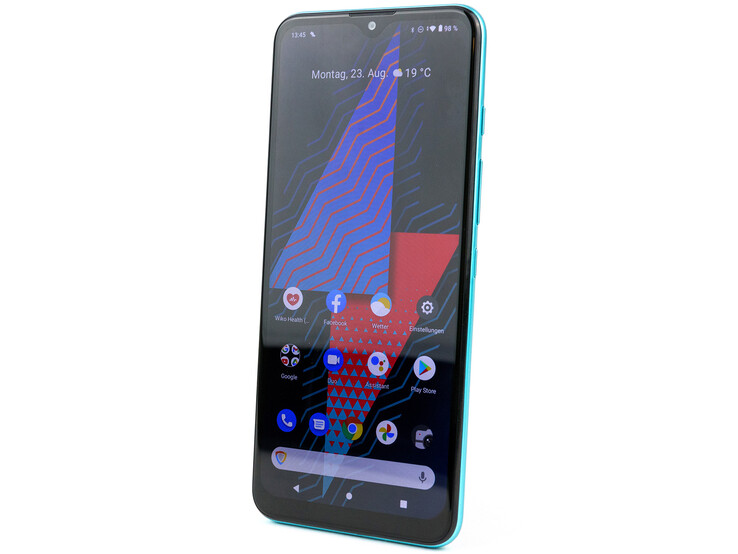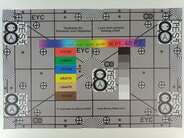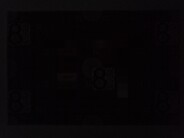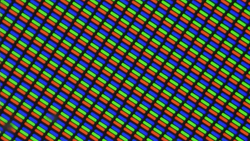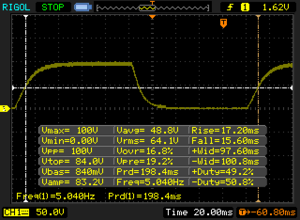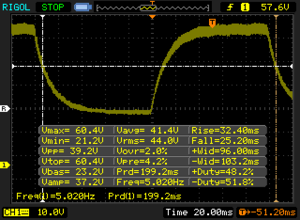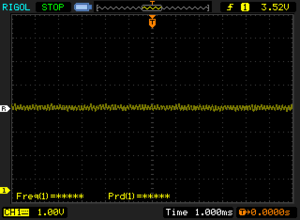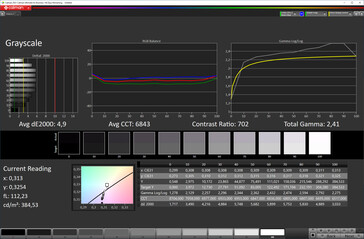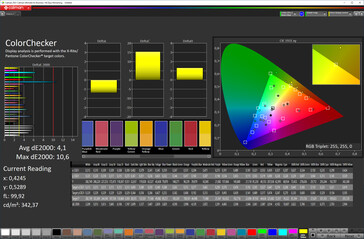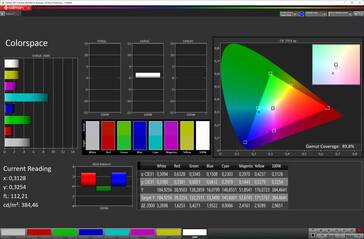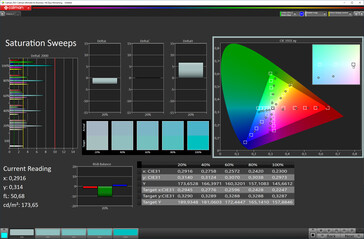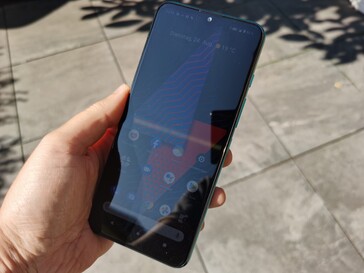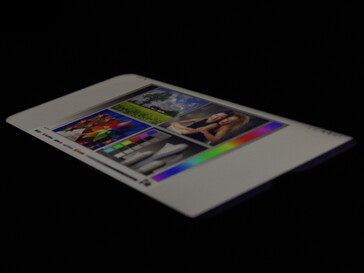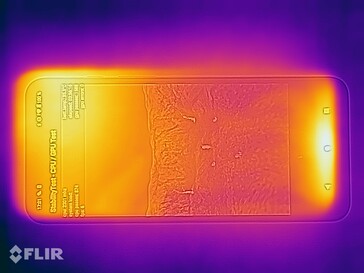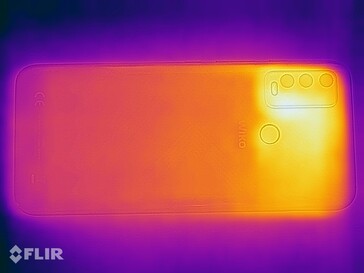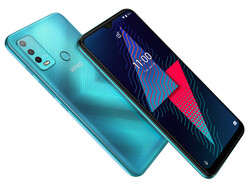Wiko Power U30 Review - Affordable smartphone with large display and large battery
Possible competitors in comparison
Rating | Version | Date | Model | Weight | Drive | Size | Resolution | Price |
|---|---|---|---|---|---|---|---|---|
| 73.8 % v7 (old) | v7 (old) | 08 / 2021 | Wiko Power U30 Helio G35, PowerVR GE8320 | 214 g | 64 GB eMMC Flash | 6.82" | 1640x720 | |
| 75.2 % v7 (old) | v7 (old) | 02 / 2021 | Samsung Galaxy A12 Helio P35 MT6765, PowerVR GE8320 | 205 g | 64 GB eMMC Flash | 6.50" | 1600x720 | |
| 78 % v7 (old) | v7 (old) | 01 / 2021 | Xiaomi Poco M3 SD 662, Adreno 610 | 198 g | 128 GB UFS 2.2 Flash | 6.53" | 2340x1080 | |
| 76.4 % v7 (old) | v7 (old) | 07 / 2021 | Nokia G20 Helio G35, PowerVR GE8320 | 197 g | 64 GB eMMC Flash | 6.50" | 1600x720 |
Case, equipment and operation
The Wiko Power U30 is mostly made of plastic and the panel is protected by an unspecified 2.5D glass. The smartphone is characterized by a clean build and leaves a stable impression. It is available in the color variants Carbone Blue, Midnight Blue and Mint.
The Power U30 offers a full-fledged dual-SIM solution and can also accept a microSD card. However, the latter does not support the exFAT file system, but it showed decent speed in the test. NFC is not supported, a notification LED is not installed, and Bluetooth 4.2 is a bit outdated. We do not understand why Wiko has artificially made things worse here, since the Helio G35 supports Bluetooth 5.0.
The Wiko smartphone can only access the mobile data network with LTE at best. However, it is not very fast with a maximum of 150 Mbps. It is even slower in Wi-Fi because only the IEEE 802.11 b/g/n standards are supported, so only the 2.4 GHz network is available. In combination with our reference router Netgear Nighthawk AX12, the Power U30 shows very slow transfer rates, which are also clearly below the possibilities of the available standard.
Wiko's Power U30 supports VoLTE as well as WLAN calling. A small pitfall after setup is the disabled 4G telephony. The voice quality is really good and even small noise or voices are reliably filtered out. There is only minimal echo in speaker mode, but the Wiko user is fairly quiet.
The operating system is up-to-date with Android 11. However, security patches are only supposed to be available for two years.
The touchscreen responds well to inputs and has pleasant gliding properties. A classic fingerprint sensor is on the back, which convinces with good recognition rates, but is a bit slow. There is no facial recognition, but there is a dedicated button for Google Assistant.
| Cross Platform Disk Test (CPDT) | |
| SDCard Sequential Read 0.5 GB | |
| Wiko Power U30 (Toshiba Exceria Pro M501) | |
| Average of class Smartphone (43.4 - 81.5, n=66, last 2 years) | |
| Nokia G20 | |
| SDCard Sequential Write 0.5 GB | |
| Average of class Smartphone (20.9 - 46.9, n=66, last 2 years) | |
| Wiko Power U30 (Toshiba Exceria Pro M501) | |
| Nokia G20 | |
Cross Platform Disk Test (CPDT)
| Networking | |
| iperf3 transmit AX12 | |
| Xiaomi Poco M3 | |
| Nokia G20 | |
| Samsung Galaxy A12 | |
| Wiko Power U30 | |
| iperf3 receive AX12 | |
| Xiaomi Poco M3 | |
| Samsung Galaxy A12 | |
| Nokia G20 | |
| Wiko Power U30 | |
Cameras - the front camera does not focus
The front-facing camera of the Wiko Power U30 shows a balanced image composition and appealing color reproduction in the test. Unfortunately, the focus is not correct although the software recognizes us as the subject.
The triple camera on the back does not deserve this designation. The 13 MP main camera takes decent pictures in good lighting conditions, but the two additional lenses do not offer any real added value. The digital zoom is also limited to a 4x size, but still delivers usable results.
Videos are recorded in Full HD with 30 FPS at best on both sides.
Image comparison
Choose a scene and navigate within the first image. One click changes the position on touchscreens. One click on the zoomed-in image opens the original in a new window. The first image shows the scaled photograph of the test device.
Wide-angleWide-angleZoom (4/5x)Low-Light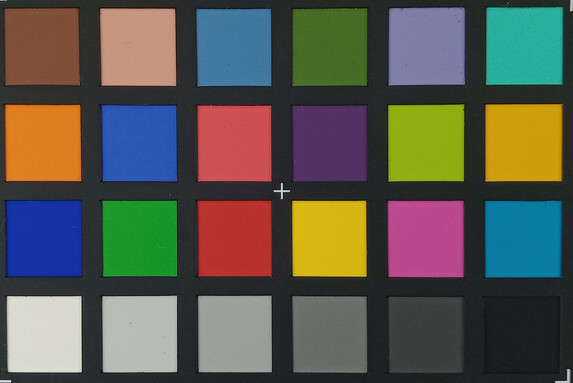

Display - Too dark in the bright, too bright in the dark
The Wiko Power U30 has a large 6.82-inch (17.32 cm) IPS screen, which unfortunately only offers the small HD resolution and very little brightness. In the dark, however, with over 15 candelas, it is too bright to read eBooks for a long time. The night light also has a very red cast.
The maximum brightness of 403 cd/m² in the center of the screen is average and shows similar values with the ambient light sensor enabled and in the APL50 measurement (both 399 cd/m²). At least Wiko does not use pulse width modulation.
The lack of support for HDR content is not surprising, but the smartphone also lacks DRM certification, so correspondingly protected content can only be consumed in SD.
The color reproduction is still a bit too cool even when the color scheme is adjusted, but it leaves a decent impression overall. A veil covers the picture at flat viewing angles and the brightness decreases. Furthermore, a slight glow effect of the IPS display becomes visible.
| |||||||||||||||||||||||||
Brightness Distribution: 87 %
Center on Battery: 403 cd/m²
Contrast: 733:1 (Black: 0.55 cd/m²)
ΔE ColorChecker Calman: 4.1 | ∀{0.5-29.43 Ø4.78}
ΔE Greyscale Calman: 4.9 | ∀{0.09-98 Ø5}
89.8% sRGB (Calman 2D)
Gamma: 2.41
CCT: 6843 K
| Wiko Power U30 IPS, 1640x720, 6.8" | Samsung Galaxy A12 PLS-LCD, 1600x720, 6.5" | Xiaomi Poco M3 IPS, 2340x1080, 6.5" | Nokia G20 IPS, 1600x720, 6.5" | |
|---|---|---|---|---|
| Response Times | -17% | 20% | 18% | |
| Response Time Grey 50% / Grey 80% * (ms) | 57.6 ? | 64 ? -11% | 44 ? 24% | 44 ? 24% |
| Response Time Black / White * (ms) | 32.8 ? | 40 ? -22% | 28 ? 15% | 29 ? 12% |
| PWM Frequency (Hz) | 337.8 ? | 893 ? | 2500 | |
| Screen | 11% | 59% | 7% | |
| Brightness middle (cd/m²) | 403 | 458 14% | 465 15% | 485 20% |
| Brightness (cd/m²) | 369 | 427 16% | 428 16% | 447 21% |
| Brightness Distribution (%) | 87 | 85 -2% | 89 2% | 88 1% |
| Black Level * (cd/m²) | 0.55 | 0.53 4% | 0.21 62% | 0.44 20% |
| Contrast (:1) | 733 | 864 18% | 2214 202% | 1102 50% |
| Colorchecker dE 2000 * | 4.1 | 4.04 1% | 1.7 59% | 5.75 -40% |
| Colorchecker dE 2000 max. * | 10.6 | 6.84 35% | 3.5 67% | 10.53 1% |
| Greyscale dE 2000 * | 4.9 | 4.8 2% | 2.4 51% | 5.7 -16% |
| Gamma | 2.41 91% | 2.293 96% | 2.16 102% | 2.095 105% |
| CCT | 6843 95% | 7535 86% | 6664 98% | 8070 81% |
| Total Average (Program / Settings) | -3% /
6% | 40% /
51% | 13% /
9% |
* ... smaller is better
Display Response Times
| ↔ Response Time Black to White | ||
|---|---|---|
| 32.8 ms ... rise ↗ and fall ↘ combined | ↗ 17.2 ms rise | |
| ↘ 15.6 ms fall | ||
| The screen shows slow response rates in our tests and will be unsatisfactory for gamers. In comparison, all tested devices range from 0.1 (minimum) to 240 (maximum) ms. » 88 % of all devices are better. This means that the measured response time is worse than the average of all tested devices (20.2 ms). | ||
| ↔ Response Time 50% Grey to 80% Grey | ||
| 57.6 ms ... rise ↗ and fall ↘ combined | ↗ 32.4 ms rise | |
| ↘ 25.2 ms fall | ||
| The screen shows slow response rates in our tests and will be unsatisfactory for gamers. In comparison, all tested devices range from 0.165 (minimum) to 636 (maximum) ms. » 94 % of all devices are better. This means that the measured response time is worse than the average of all tested devices (31.6 ms). | ||
Screen Flickering / PWM (Pulse-Width Modulation)
| Screen flickering / PWM not detected | |||
In comparison: 53 % of all tested devices do not use PWM to dim the display. If PWM was detected, an average of 8091 (minimum: 5 - maximum: 343500) Hz was measured. | |||
Performance, emissions and battery life
The heart of the Wiko Power U30 is the MediaTek Helio G35which was introduced in the middle of last year and is assigned to the entry-level class. The eight ARM Cortex-A53 cores work with up to 2.3 GHz. The GPU is a PowerVR GE8320 which has already been used in different SoCs since 2014. Accordingly, the support for modern APIs like Vulkan 1.0 is poor and the gaming performance is very weak.
Long landing times occur even in less demanding games. More demanding titles can be executed, but they are not much fun. PUBG Mobile takes more than two minutes to start and even the HD setting, which is no longer up to date, cannot even be selected and the game stutters again and again. In return, the Power U30 barely warms up even under load.
The speaker on the bottom edge is not convincing. Music sounds muffled, unbalanced and always overdriven. This is better via the audio jack, which can convince with a very low-noise reproduction (SNR: 90.19 dBFS). Bluetooth 4.2 is no longer up-to-date, but Wiko's smartphone supports the most important codecs (SBC, AAC, aptX, aptX HD and LDAC).
The large battery helps the Power U30 achieve long battery runtimes, but it does not particularly stand out from the competition.
| PCMark for Android | |
| Work 3.0 (sort by value) | |
| Wiko Power U30 | |
| Nokia G20 | |
| Average Mediatek Helio G35 (5208 - 5581, n=5) | |
| Average of class Smartphone (4507 - 28557, n=186, last 2 years) | |
| Work 2.0 performance score (sort by value) | |
| Wiko Power U30 | |
| Nokia G20 | |
| Samsung Galaxy A12 | |
| Xiaomi Poco M3 | |
| Average Mediatek Helio G35 (5279 - 5594, n=2) | |
| AImark - Score v2.x (sort by value) | |
| Wiko Power U30 | |
| Xiaomi Poco M3 | |
| Average Mediatek Helio G35 (n=1) | |
| Wiko Power U30 | Samsung Galaxy A12 | Xiaomi Poco M3 | Nokia G20 | Average 64 GB eMMC Flash | Average of class Smartphone | |
|---|---|---|---|---|---|---|
| AndroBench 3-5 | 68% | 289% | 33% | 51% | 1197% | |
| Sequential Read 256KB (MB/s) | 239.8 | 269.7 12% | 509 112% | 256.1 7% | 277 ? 16% | 2228 ? 829% |
| Sequential Write 256KB (MB/s) | 92.2 | 211.6 130% | 269.2 192% | 139.3 51% | 178.4 ? 93% | 1852 ? 1909% |
| Random Read 4KB (MB/s) | 43.49 | 65.4 50% | 147 238% | 63.5 46% | 60.7 ? 40% | 296 ? 581% |
| Random Write 4KB (MB/s) | 21.6 | 39.1 81% | 154.1 613% | 27.4 27% | 33.8 ? 56% | 339 ? 1469% |
Temperature
(+) The maximum temperature on the upper side is 34.4 °C / 94 F, compared to the average of 35.2 °C / 95 F, ranging from 21.9 to 247 °C for the class Smartphone.
(+) The bottom heats up to a maximum of 34.3 °C / 94 F, compared to the average of 34 °C / 93 F
(+) In idle usage, the average temperature for the upper side is 31.3 °C / 88 F, compared to the device average of 32.9 °C / 91 F.
Speaker
Wiko Power U30 audio analysis
(+) | speakers can play relatively loud (89.6 dB)
Bass 100 - 315 Hz
(-) | nearly no bass - on average 38.9% lower than median
(+) | bass is linear (3.9% delta to prev. frequency)
Mids 400 - 2000 Hz
(±) | reduced mids - on average 8.3% lower than median
(±) | linearity of mids is average (8.1% delta to prev. frequency)
Highs 2 - 16 kHz
(±) | higher highs - on average 5% higher than median
(±) | linearity of highs is average (7% delta to prev. frequency)
Overall 100 - 16.000 Hz
(±) | linearity of overall sound is average (25.1% difference to median)
Compared to same class
» 61% of all tested devices in this class were better, 7% similar, 32% worse
» The best had a delta of 11%, average was 35%, worst was 134%
Compared to all devices tested
» 76% of all tested devices were better, 5% similar, 19% worse
» The best had a delta of 4%, average was 24%, worst was 134%
Samsung Galaxy A12 audio analysis
(±) | speaker loudness is average but good (80.9 dB)
Bass 100 - 315 Hz
(-) | nearly no bass - on average 63% lower than median
(+) | bass is linear (0% delta to prev. frequency)
Mids 400 - 2000 Hz
(-) | nearly no mids - on average 63% lower than median
(+) | mids are linear (0% delta to prev. frequency)
Highs 2 - 16 kHz
(-) | nearly no highs - on average 63% lower than median
(+) | highs are linear (0% delta to prev. frequency)
Overall 100 - 16.000 Hz
(-) | overall sound is not linear (119.7% difference to median)
Compared to same class
» 88% of all tested devices in this class were better, 8% similar, 3% worse
» The best had a delta of 11%, average was 35%, worst was 134%
Compared to all devices tested
» 97% of all tested devices were better, 3% similar, 1% worse
» The best had a delta of 4%, average was 24%, worst was 134%
Battery life
| Wiko Power U30 6000 mAh | Samsung Galaxy A12 5000 mAh | Xiaomi Poco M3 6000 mAh | Nokia G20 5050 mAh | Average of class Smartphone | |
|---|---|---|---|---|---|
| Battery Runtime | |||||
| WiFi Websurfing (h) | 20.6 | 21.5 4% | 20.8 1% | 19.8 -4% | 19.3 ? -6% |
Pros
Cons
Verdict - Wiko phone with chic colors and long runtimes
Wiko's Power U30 is a solid entry-level smartphone that particularly convinces with long battery runtimes and good voice quality in the test. The full-fledged dual-SIM solution is also practical.
If you absolutely need a large display and long battery runtimes, the Wiko Power U30 could be just right for you.
The large screen offers a lot of viewing area, but it is comparatively dark and not crisp due to the low resolution. Furthermore, this in combination with the 6,000 mAhbattery makes for quite a heavy weight. The communication modules are limited to the bare essentials.
The camera setup is sufficient for occasional snapshots. However, it is a pity that the focus of the front camera is not right. Strong alternatives are the Nokia G20 and the Poco M3.
Wiko Power U30
- 08/24/2021 v7 (old)
Daniel Schmidt




